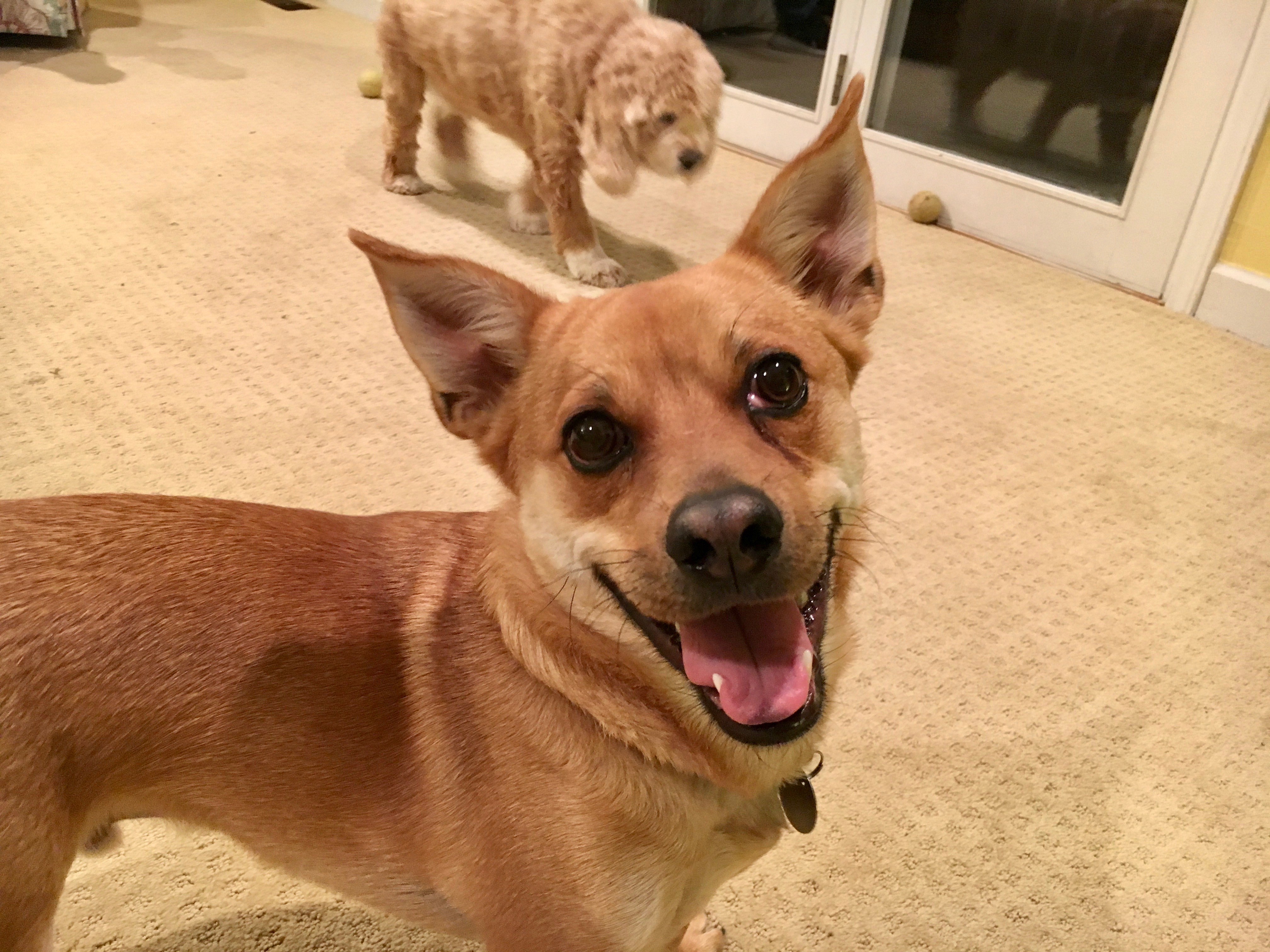Teaching a Terrier in Charlotte to Go to His Kennel on Command
By: David Codr
Published Date: March 12, 2018
For this Charlotte, NC dog training session, we worked with Romeo, a 1 year-old Terrier mix who doesnt like going into his kennel when his family is leaving the house, refusal to drop the ball when playing fetch and occasional pooping in the house.
I started out by making a few suggestions that will help in general as well as with this pooping problem. Romeo had taken to going to the bathroom in a few low use parts of the house. The family had cordoned those off to curtail his secret pooping, but I wanted to offer a more long term solution. When discussing this problem, I learned that his guardians did catch him in the act a few times and admonished him.
While this makes perfect sense to us, dogs often misinterpret this as thinking “the humans get mad when I potty,” not ‘the humans get mad when the dog potty’s in the house.’ This is the second most common mistake people make when potty training dogs and it often causes the dog to hide and not eliminate in front of the humans.
Because a dog’s digestive track is about 8 hours on average for foods, I recommended they switch from a free feeding situation to one where food is offered 2 or three times a day and any leftover food is returned to the bowl.
Many people think that when they have dogs in a habit, this change is unnecessary. But all dogs come around to the technique eventually. All you have to do is offer food at a specific time, give each dog 3-5 minutes then dump any leftover food. You may have a determined dog who tried to hold out, but after a few days, hunger gives in. Because eating is the most important social activity dogs participate in, eating first, then controlling your dog’s access to food helps the dog respect you as an authority figure. This helps it listen better, take corrections better and stops many nuisance problems for you.
As we were discussing the feeding situation, I noticed that Romeo didn’t drop the ball when playing fetch. I showed the children an easy way to get the dog to drop the ball after retrieving it when playing fetch.
Before getting to the kennel training, the guardians showed me they had ordered a furminator brush to capture Romeo’s loose hairs before they shed on the floor. This is a great brush, but the sensation it makes can cause some dogs to fear it.
To make sure Romeo didn’t develop a fear of the shedding brush, I showed the guardians how to create a Conditioned Emotional Response or CER. You can get this free dog behavior tip to help any dog like the brush by watching the video below.
If the guardians do this a few times a day for a week and use a progressive approach, Romeo should actually enjoy getting his loose hair removed.
Next up was Romeo’s hesitating when ordered to go into the kennel. First thing I made sure to ask how long he was in the kennel in a stretch. Dogs develop anxiety when kenneled for longer than 4 hours in a row. Fortunately, Romeo wasn’t kenneled that long.
That said, the only time Romeo was asked to go into his kennel was when the humans were leaving. This can easily cause the dog to make a connection kennel = humans leaving. Some dogs learn that if they disobey and run away, the humans chase them which prevents them from leaving and is a fun game to the dog. But if you chase a dog to put it into the kennel, you are teaching the dog to continue acting this way.
Fortunately Romeo is not afraid of the kennel, he just prefers to not go in it at times. Creating a positive association with a crate is easy if you use a positive reward based approach. I pulled out some high value treats and showed the guardians how to train a dog to like going into its kennel.
Teaching a dog to go into its crate on command is easy, it just takes some practice and high value treats. If each of the kids practice this positive crate training exercise with Romeo 7 times a day, within a week he should be running into the kennel as soon as he hears the word kennel. Just make sure the kids say “kennel” after Romeo gobbles up each treat and only toss one treat in at a time (spaced at least 10 min apart).
I made a few other suggestions such as petting Romeo every time he comes on his own while saying the word “come,” petting him and saying “sit,” each time he sits, etc. By recognizing and rewarding Romeo when he offers desired behaviors, he will be much more inclined to listen and respond to them when given as orders in the future.
To help the guardians remember all the dog behavior secrets I shared with this in this in home dog training session, we shot a roadmap to success video that you can check out below.
Categorized in: Dog Behavior


